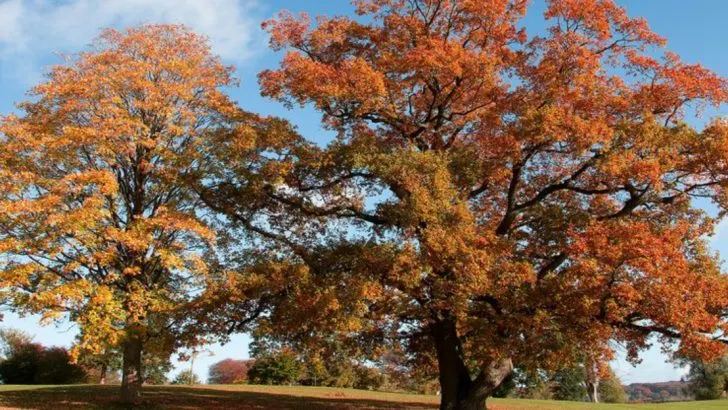When it comes to landscaping, it’s easy to get drawn to the popular tree varieties that everyone seems to be planting. But some of the most unique and stunning trees often get overlooked. These underrated gems offer incredible beauty, shade, and character, making them great additions to any yard. Plus, many are low-maintenance and provide a variety of benefits that you may not expect.
In this article, we’ll introduce you to 26 trees that deserve more attention. From the striking colors of the serviceberry to the elegant form of the river birch, these trees offer something special for your garden. Whether you’re looking for something unusual or just want to try a tree that’s a little less common, these options will definitely make your landscape stand out.
Kentucky Coffeetree
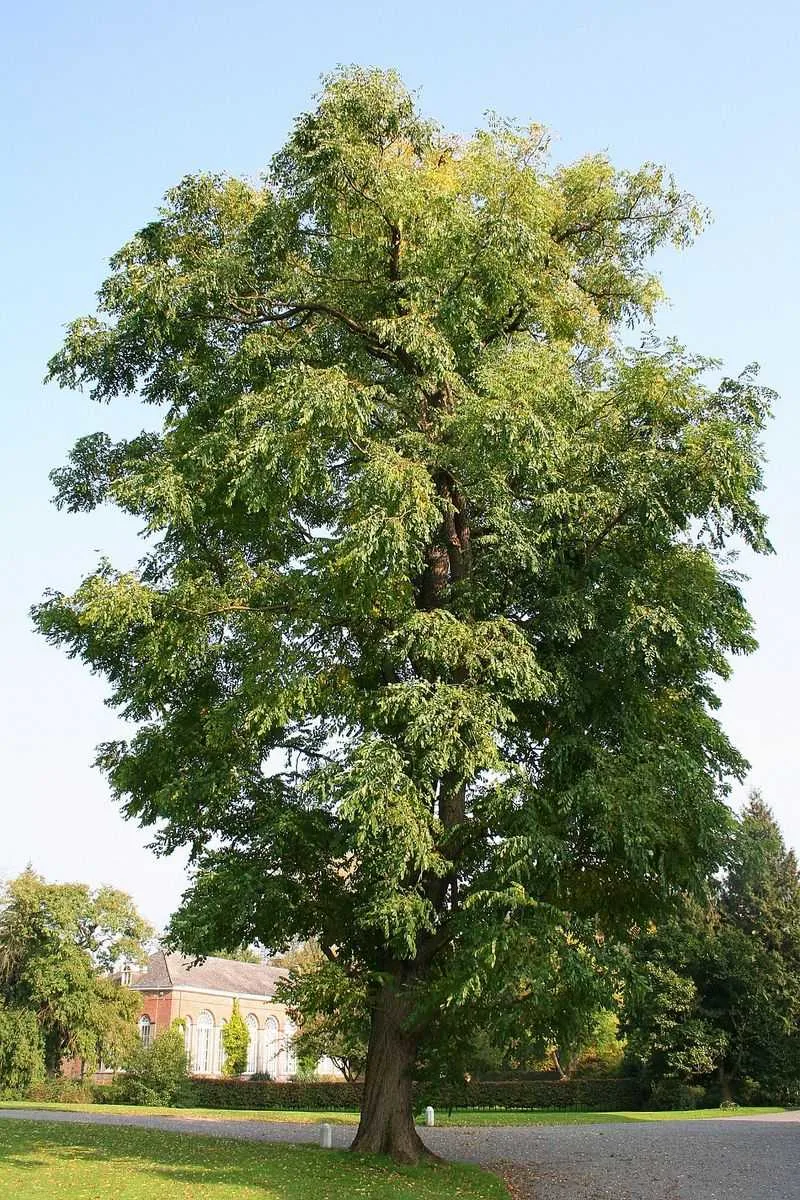
The Kentucky Coffeetree is a versatile and hardy tree suitable for various climates. It stands out with its unique, large compound leaves that provide a delicate, airy appearance.
In the fall, the leaves turn a striking yellow, offering a lovely seasonal display. This tree is drought-tolerant and can thrive in less fertile soils, making it a low-maintenance option.
Its seed pods add a touch of interest during the winter months, although they can be toxic if ingested. Ensure it’s positioned away from curious pets and children.
Sourwood
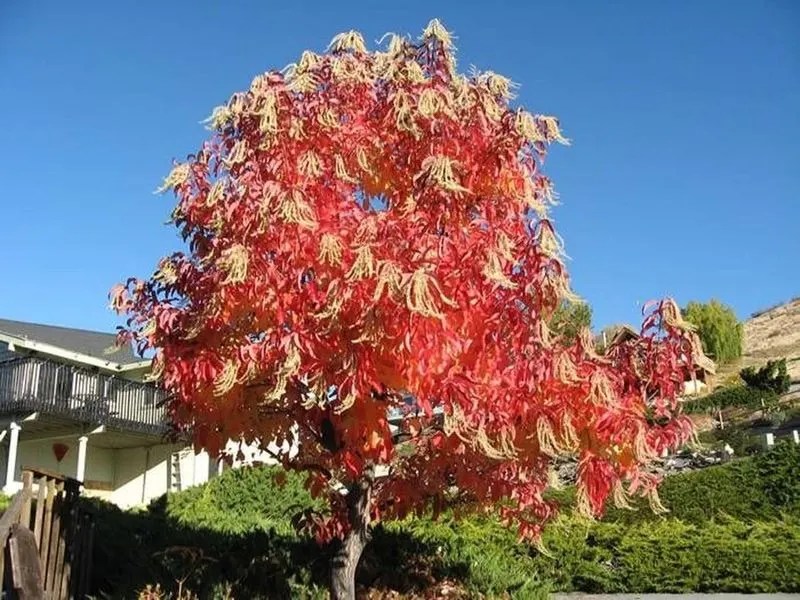
Sourwood trees are celebrated for their stunning autumn colors, offering brilliant shades of red and purple. In the summer, they produce delicate, bell-shaped white flowers that attract pollinators.
These trees are perfect for adding seasonal interest and enhancing biodiversity in your garden. Sourwoods prefer acidic soils and can thrive in both full sun and partial shade.
Their relatively small size makes them ideal for smaller yards, where they won’t overshadow other plantings. Consider planting them near patios or walkways to enjoy their seasonal changes up close.
Serviceberry
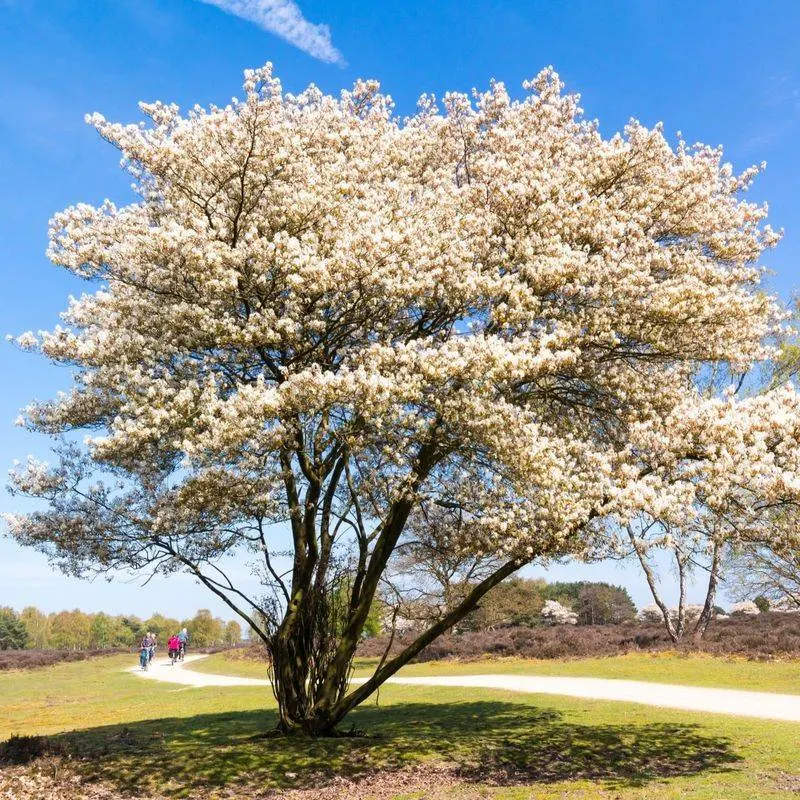
Serviceberry trees bring year-round beauty with their changing appearances. In spring, they burst with white blossoms, followed by deliciously edible berries.
These berries, dark purple when ripe, are a treat for both humans and wildlife.
In autumn, the leaves provide a vibrant display of oranges and reds. Serviceberries are adaptable, thriving in various soil types, though they prefer well-drained conditions.
Their relatively small stature makes them ideal for urban gardens. To enjoy both flowers and fruits, consider placing them where you can easily view their seasonal transformations.
Chaste Tree
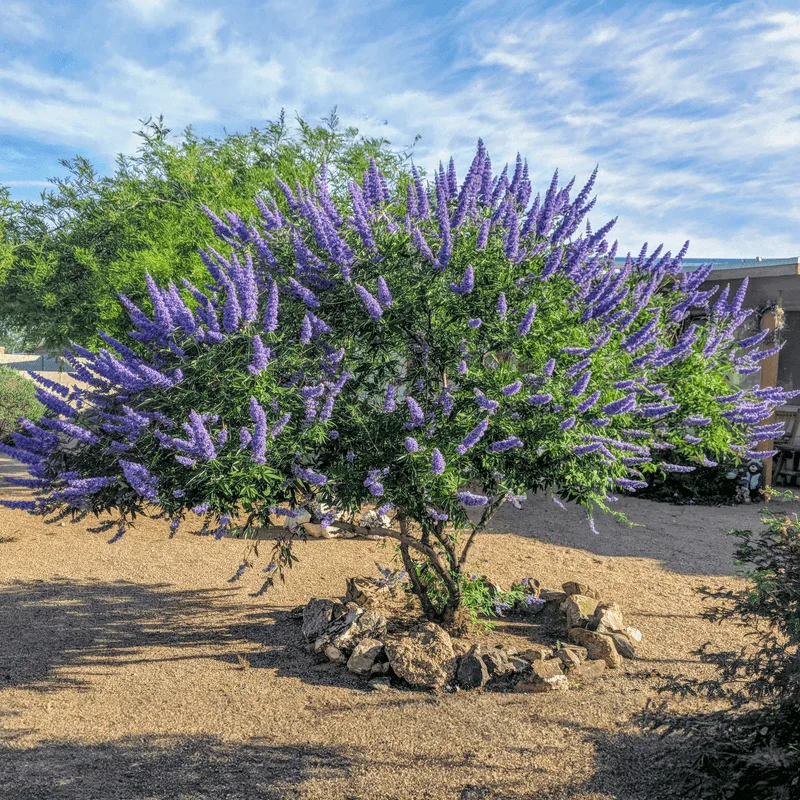
The Chaste Tree, known for its aromatic violet-blue flower spikes, adds a Mediterranean flair to any garden. It blooms in mid to late summer, providing a splash of color when many other plants have finished flowering.
This tree is drought-tolerant and prefers well-drained soils, making it a great choice for low-water gardens. Pruning can maintain its shape and encourage more prolific blooming.
Also believed to have medicinal properties, it historically has been used for various herbal remedies. Plant it where its fragrant blossoms can be fully appreciated throughout the warm months.
Redbud
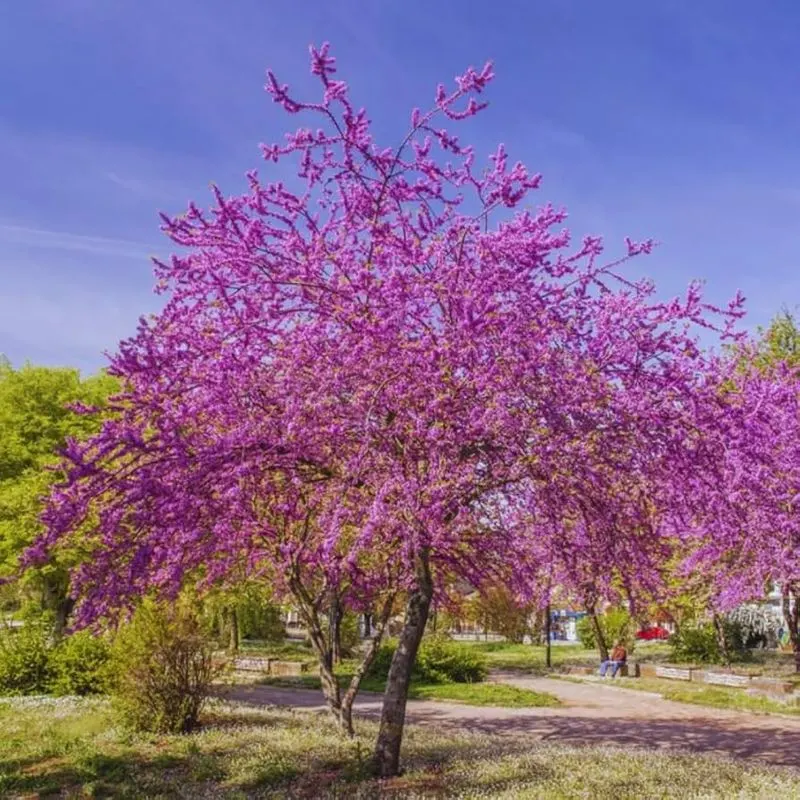
Redbuds are beloved for their showy pink blossoms that herald the arrival of spring. These small trees fit well into modest spaces, offering bursts of color before most other plants have awoken from winter.
The heart-shaped leaves that follow the flowers create a lush canopy, turning yellow in the fall. Redbuds adapt to various soil types but thrive in well-drained, moderately fertile soils.
Their delicate branches and flowers attract butterflies, supporting your local ecosystem. Consider planting them near windows to enjoy their early spring blooms from indoors.
Cucumber Tree
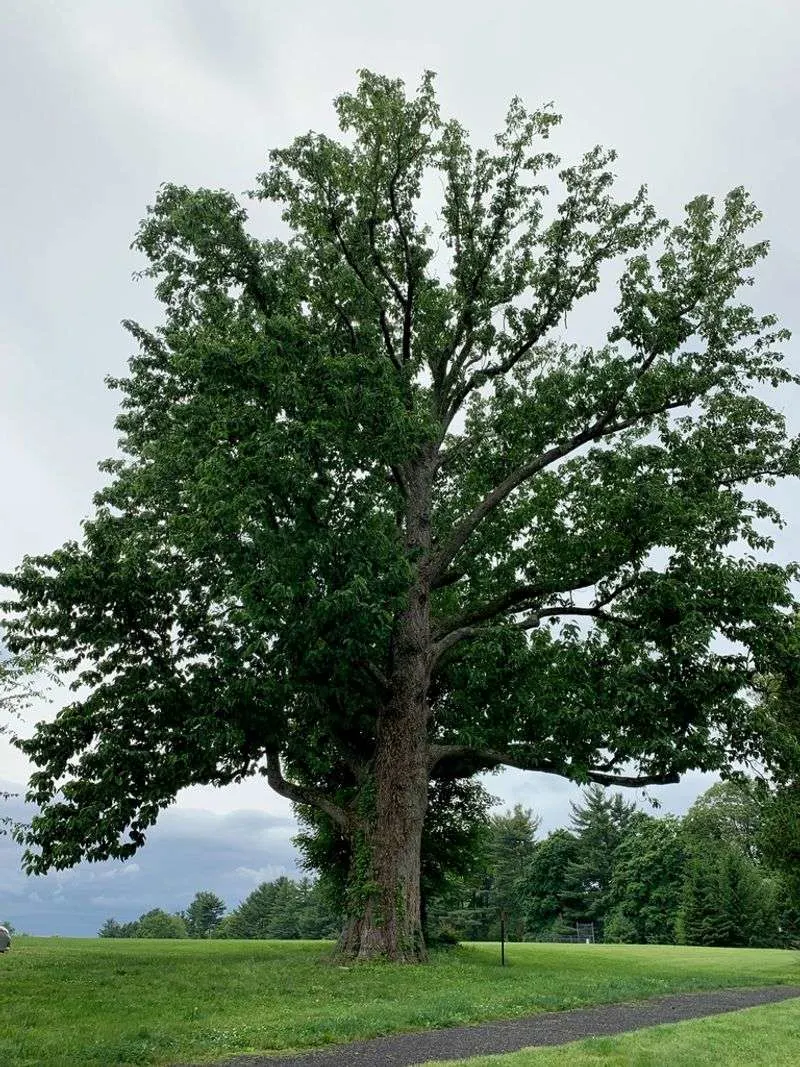
The Cucumber Tree, a member of the magnolia family, is a hidden gem among yard trees. Its name derives from its unripe fruit that bears a resemblance to cucumbers.
This tree can grow up to 80 feet, providing ample shade and a striking silhouette.
In spring, the Cucumber Tree bursts into bloom with large, yellow-green flowers that emit a subtle fragrance. These blossoms are not only beautiful but also attract beneficial pollinators to your garden.
If you’re looking for a tree that combines aesthetic appeal with ecological benefits, the Cucumber Tree is a worthy choice. It thrives best in well-drained soil and enjoys a spot where it can soak up plenty of sunlight.
Persimmon
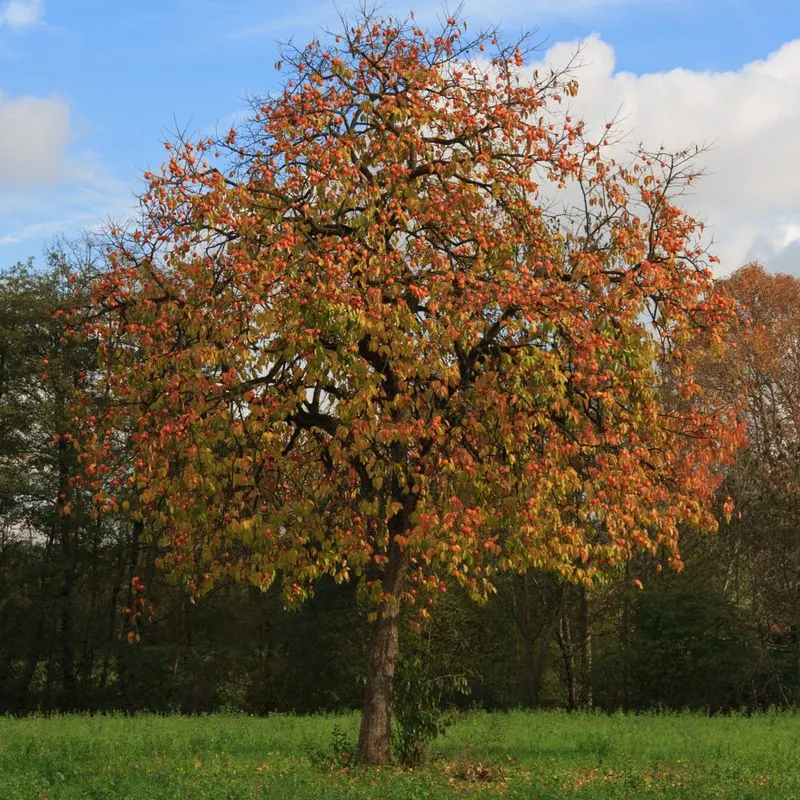
Persimmon trees are known for their delightful orange fruits that ripen in late autumn. These fruits are not only delicious but also packed with nutrients.
The tree itself is hardy, able to withstand drought and poor soil conditions, making it a reliable choice for various landscapes. Its glossy green leaves turn a warm yellow in fall, adding seasonal interest.
Persimmons can be grown in full sun to partial shade and require minimal maintenance once established. Their unique fruits can be used in a variety of culinary dishes, adding flavor and nutrition.
Pawpaw
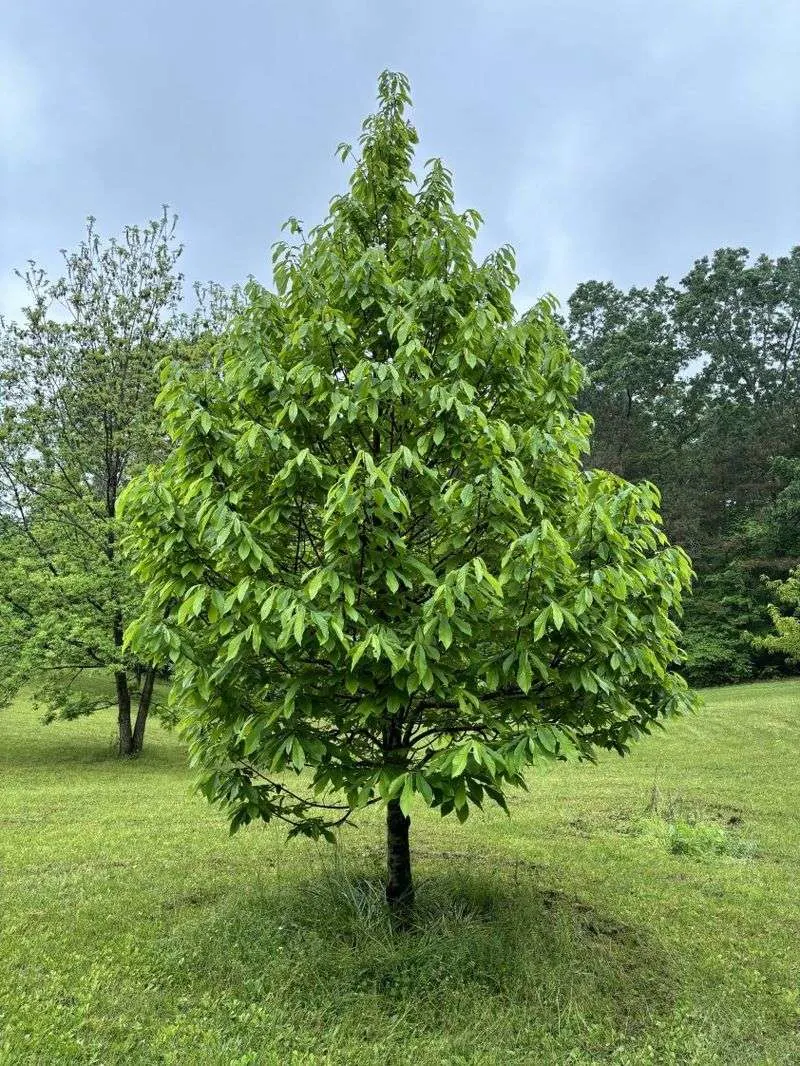
The Pawpaw tree might not be widely known, but its unique fruit and foliage make it a standout choice. Often likened to a banana or mango in flavor, Pawpaw fruits are a treat for fruit lovers.
The tree’s large, lush leaves create a tropical feel, and it thrives in shaded, woodland environments. Although it prefers fertile, well-drained soil, it can adapt to various conditions.
Its flowers are dark maroon and appear in early spring, adding to its charm. Consider planting Pawpaw trees if you’re interested in exploring unusual, nutritious fruits.
Black Tupelo
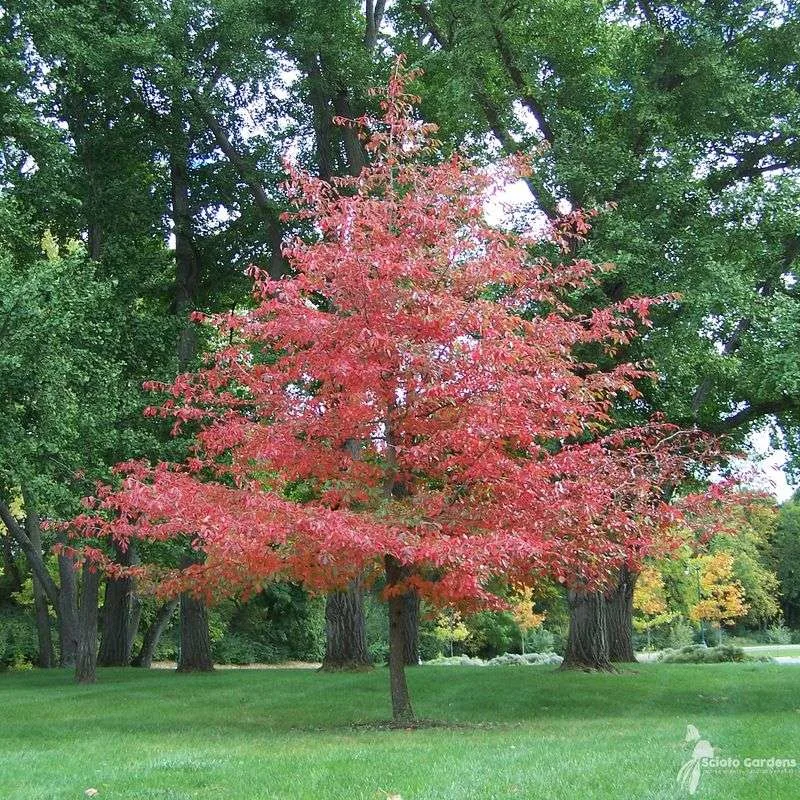
Black Tupelo, or Black Gum, is a magnificent tree renowned for its vibrant autumn foliage. In spring and summer, its glossy green leaves offer a dense canopy that provides ample shade.
Come fall, these leaves transform into brilliant shades of red, orange, and yellow, creating a stunning visual display. Black Tupelo thrives in wet, acidic soils, and is often found in swampy environments.
Its adaptability to various conditions, including drought and colder climates, makes it a versatile choice for diverse landscapes. Plant it where its seasonal hues can be fully appreciated.
Fringe Tree
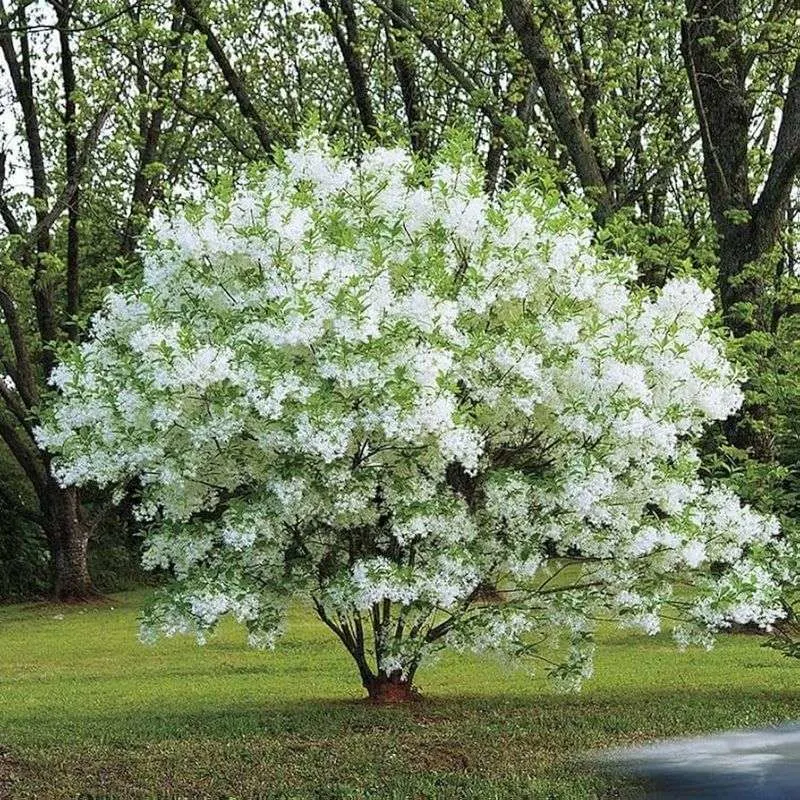
The Fringe Tree captivates with its airy, fringe-like blossoms in late spring. These fragrant white flowers make it a delightful addition to any garden, attracting bees and other pollinators.
This tree prefers moist, well-drained soils and can thrive in both full sun and partial shade. Its adaptability and minimal maintenance needs make it suitable for a range of settings.
In autumn, the leaves turn a pleasing yellow, adding to its appeal. Consider planting Fringe Trees near entrances or patios where you can enjoy their elegant blooms and fragrance.
Goldenraintree
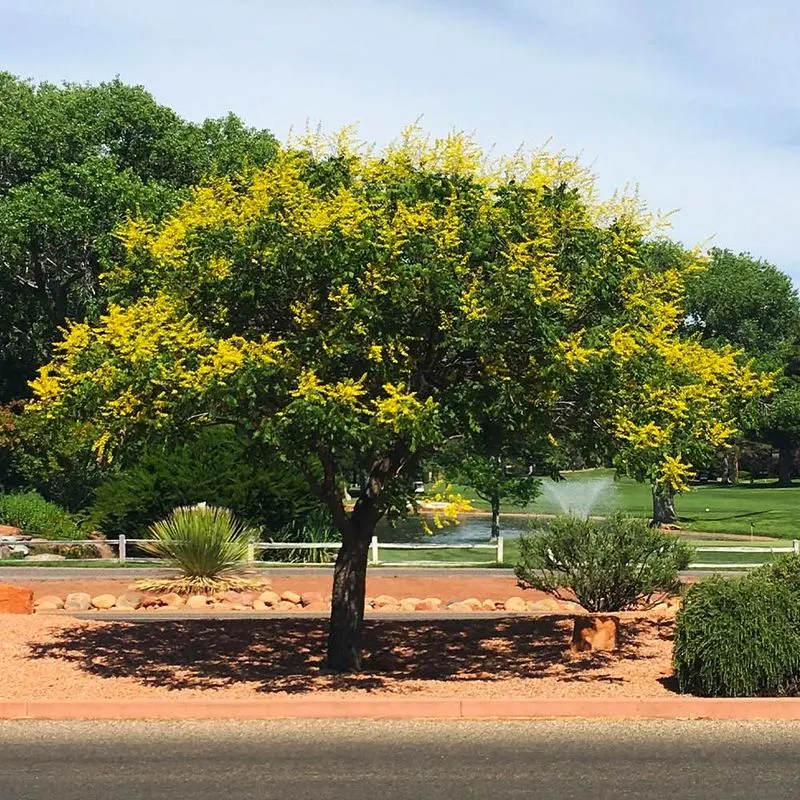
Goldenraintree is cherished for its clusters of bright yellow flowers that bloom in early summer. These cheerful blossoms are followed by decorative, papery seed pods that persist into winter.
This tree thrives in full sun and well-drained soil, though it’s quite adaptable to various conditions. Its moderate size makes it suitable for residential landscapes without overpowering the space.
Goldenraintrees add color and interest throughout the year, requiring minimal care once established. They’re an excellent choice for adding a long-lasting splash of color to gardens and parks alike.
Yellowwood
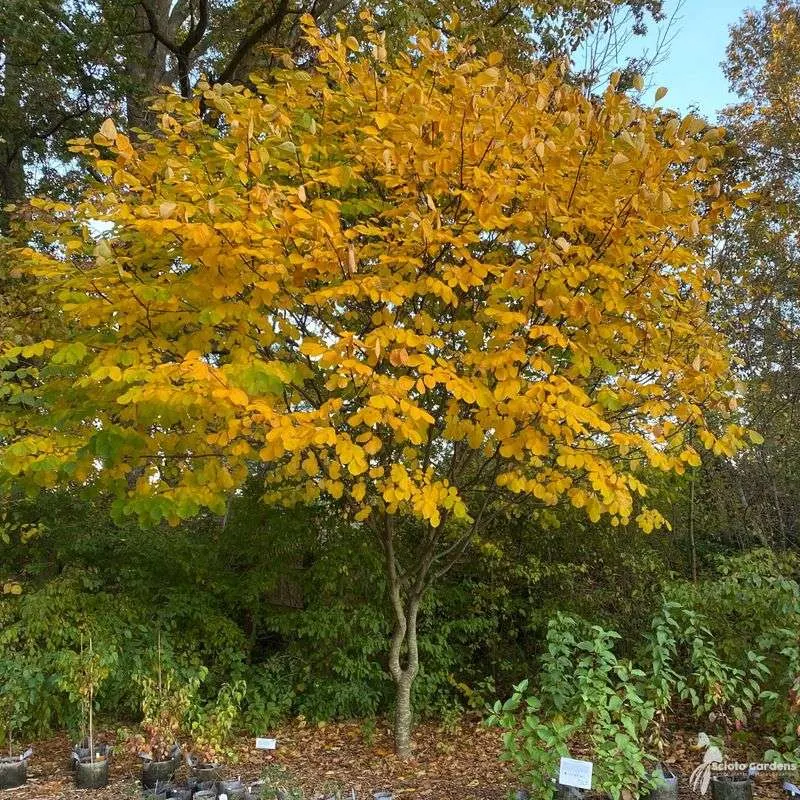
Yellowwood trees are not only beautiful but also offer a delightful fragrance with their white flower clusters blooming in late spring. These trees are medium-sized, making them suitable for smaller urban landscapes.
The smooth, gray bark adds visual interest year-round, and their bright green leaves transform into a lovely yellow in the fall. Yellowwood thrives in well-drained soils and prefers full sun to partial shade.
It’s relatively low maintenance, requiring pruning mainly to enhance its natural shape. Consider Yellowwood for its beauty, fragrance, and seasonal color changes.
Carolina Silverbell
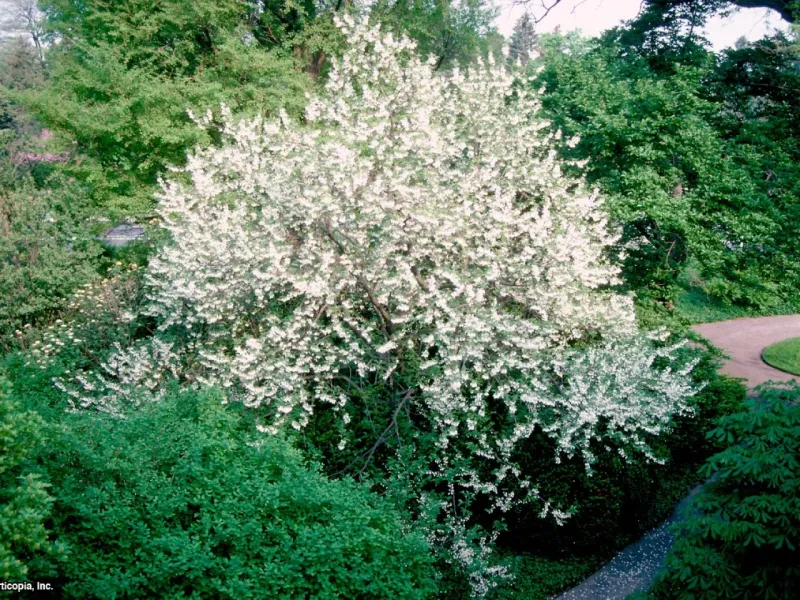
Carolina Silverbell is a charming tree, known for its bell-shaped white flowers that hang gracefully in spring. These blossoms create an enchanting display, brightening any landscape.
This tree thrives in rich, moist soils and prefers partial shade, making it ideal for woodland gardens or areas with filtered sunlight. The green leaves turn yellow in the fall, adding seasonal interest.
Carolina Silverbell’s elegance and manageable size make it perfect for residential gardens. Its minimal maintenance requirements and delicate beauty make it a worthwhile addition to any yard.
Japanese Pagoda Tree
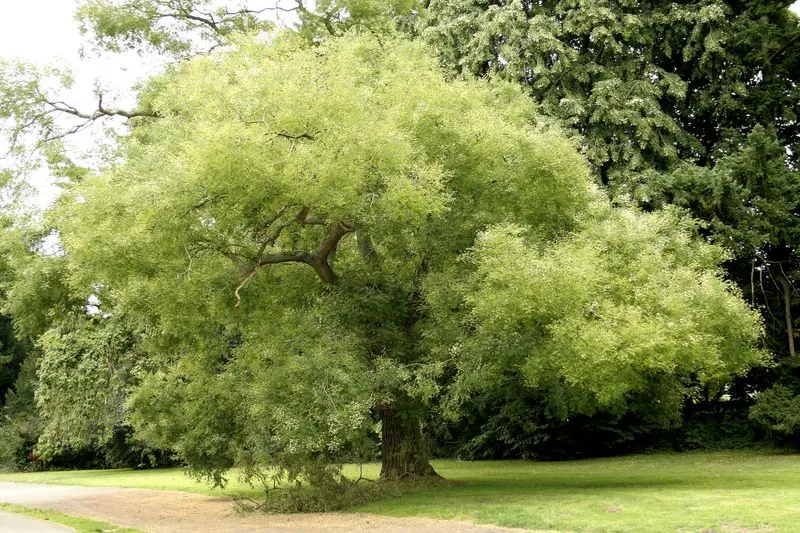
The Japanese Pagoda Tree, also known as the Scholar Tree, is a majestic ornamental tree. It bears creamy white flower clusters in late summer, adding elegance to gardens and public spaces.
This tree is well-suited to urban environments due to its pollution tolerance and adaptability to different soil types. Its lush, compound leaves provide a dense canopy, offering much-needed shade.
While it can grow quite large, its beauty and resilience make it a desirable choice for larger landscapes. Ensure ample space for its expansive growth and elegant floral displays.
Ironwood
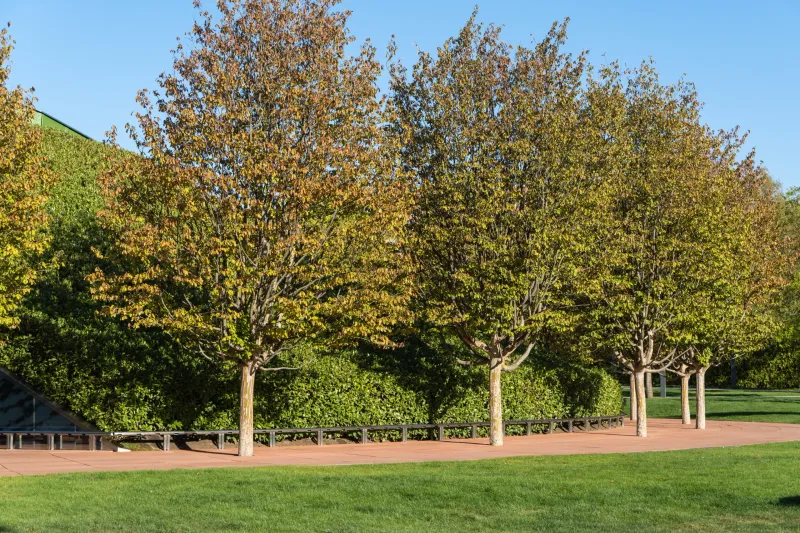
Ironwood, or American Hornbeam, is renowned for its hard, dense wood and muscular-looking trunk. This small tree is perfect for adding a unique architectural element to gardens.
Its dark green leaves turn a mix of yellow, orange, and red in the fall, offering vibrant seasonal color. Ironwood prefers moist, well-drained soil and can thrive in both sun and shade.
It’s a slow-growing tree, requiring little maintenance once established. This makes it an ideal choice for those seeking a distinctive, low-maintenance tree that provides year-round interest.
Flowering Dogwood
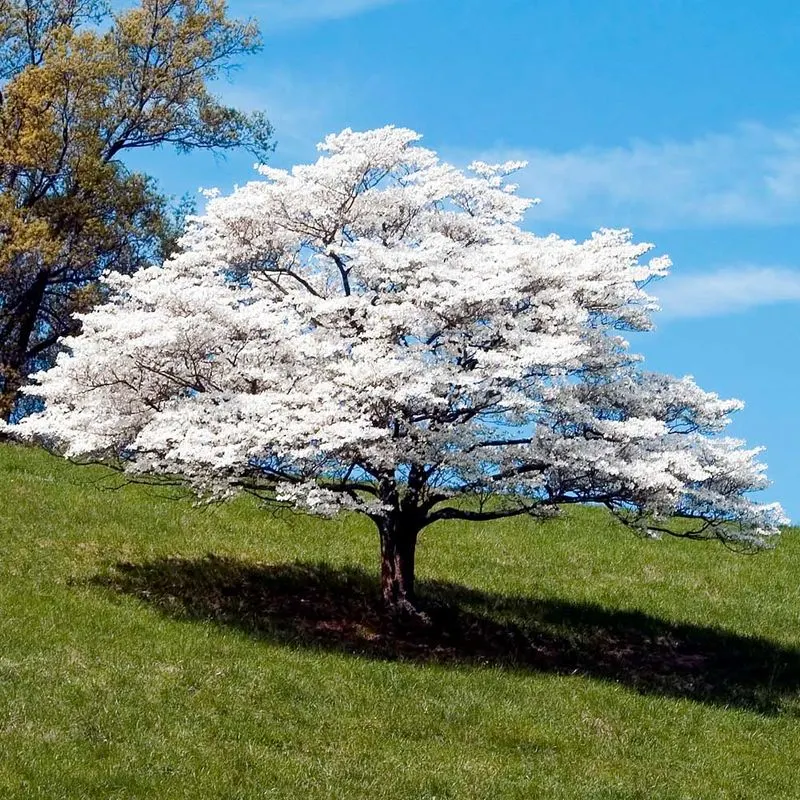
Flowering Dogwoods are beloved for their stunning spring blossoms and vibrant fall foliage. These small trees are perfect for gardens where space is limited but impact is desired.
In spring, they produce an abundance of white or pink flowers, followed by striking red berries that attract birds. The leaves then turn a beautiful red-purple in the fall.
Dogwoods prefer well-drained, acidic soil and can thrive in both sun and partial shade. Their visual appeal and wildlife-friendly attributes make them a popular choice for residential landscapes.
Sweetbay Magnolia
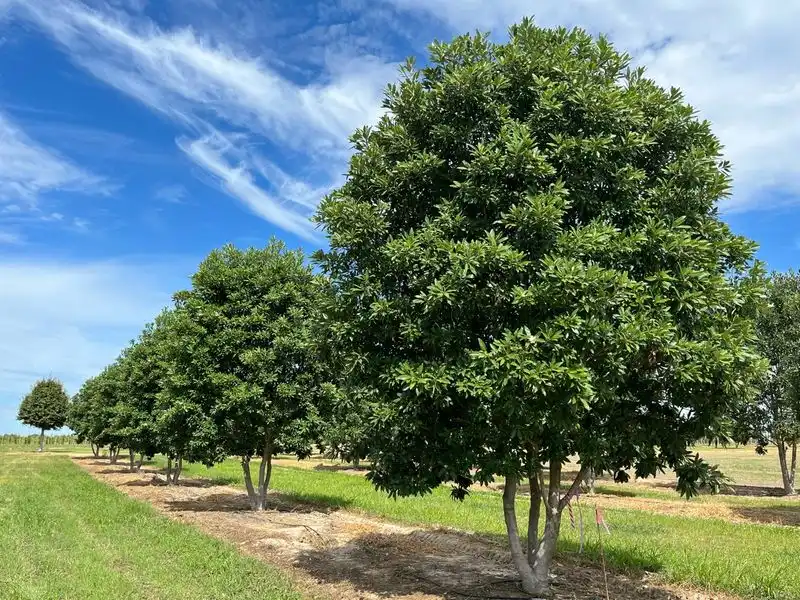
Sweetbay Magnolia captivates with its creamy white, lemon-scented flowers that bloom throughout summer. This graceful tree’s glossy evergreen leaves add beauty year-round.
It thrives in moist, acidic soils, making it ideal for gardens with water features or naturally damp areas. Sweetbay Magnolia is tolerant of both full sun and partial shade.
Requiring minimal maintenance, it attracts a range of pollinators with its fragrant blossoms. Consider planting it where its delightful scent and elegant flowers can be fully appreciated, such as near patios or garden paths.
Eastern Redcedar
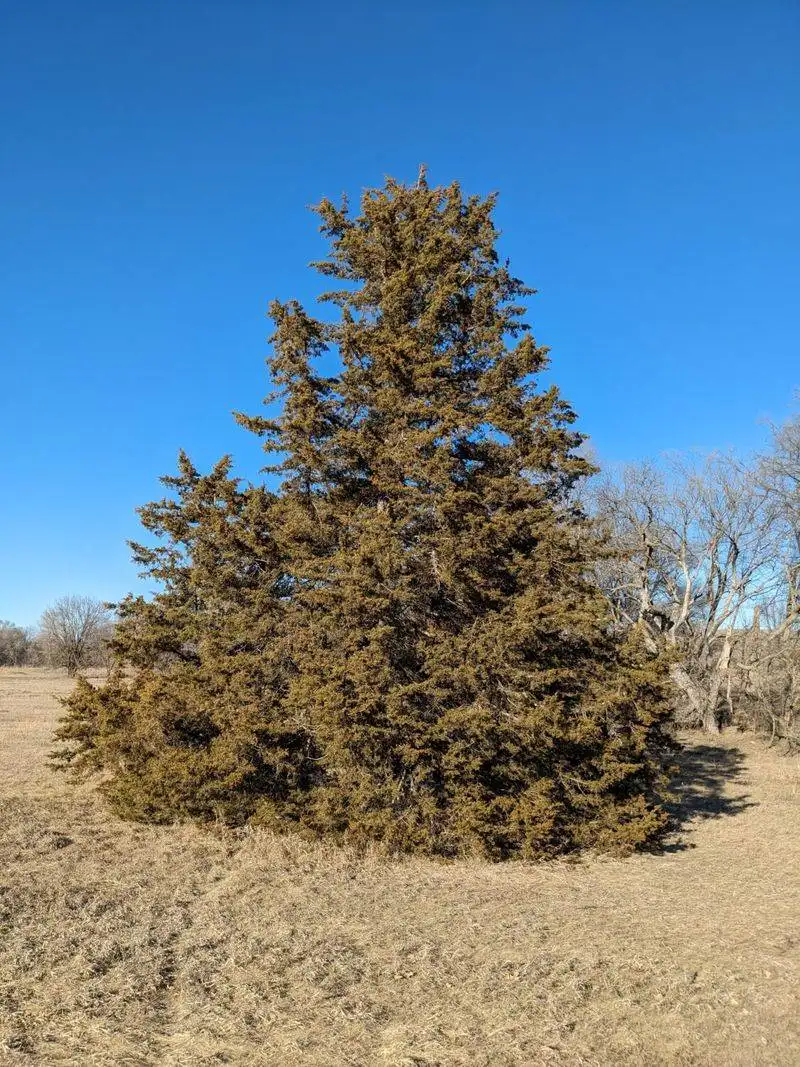
The Eastern Redcedar is a versatile evergreen, known for its attractive bluish-green foliage and aromatic wood. This hardy tree is well-suited to a variety of conditions, from dry fields to urban environments.
Its dense foliage provides excellent wildlife shelter, and its small, purple-blue berries are favored by many bird species. Eastern Redcedar is drought-tolerant and can thrive in poor soils.
Its robust nature and year-round color make it an excellent choice for windbreaks or privacy screens. Consider this tree for its beauty, resilience, and ecological benefits.
Osage Orange
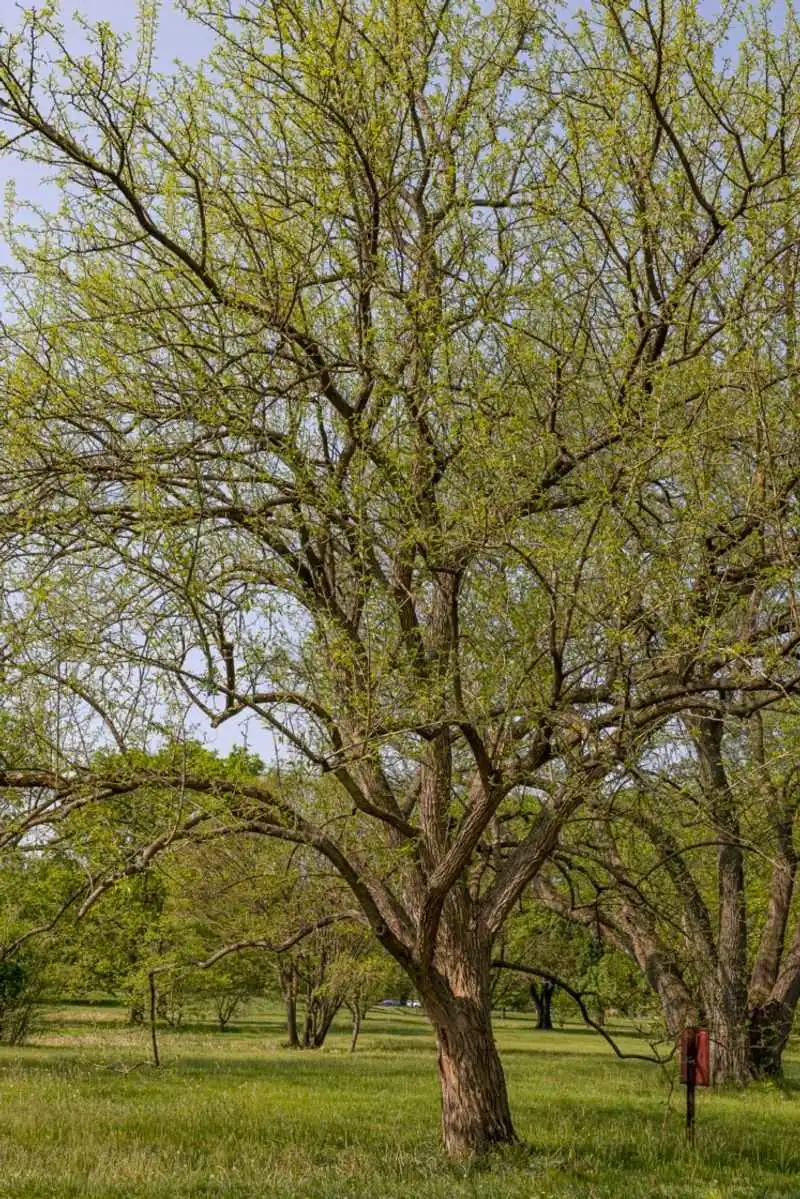
Osage Orange is a distinctive tree known for its bright green, globular fruit and thorny branches. Although not typically eaten, the large, knobby fruit adds visual interest.
This tree is hardy and adaptable, thriving in a range of soil types and climates. Its dense, thorny branches make it ideal for boundary hedges or windbreaks.
In fall, the leaves turn a rich yellow, providing seasonal color. Osage Orange’s unique appearance and utility make it a valuable addition to rural or expansive landscapes where its distinctive features can be appreciated.
Black Cherry
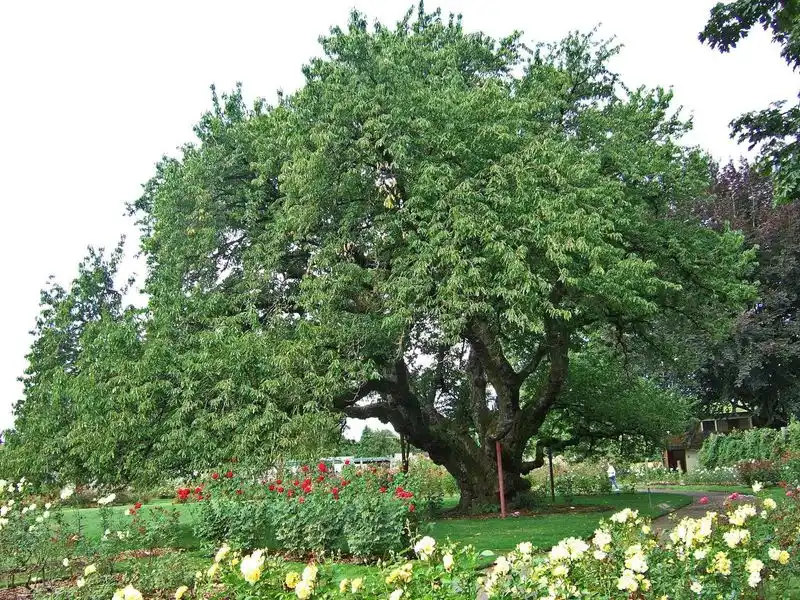
Black Cherry is a native tree valued for its height and versatility. In spring, it produces small white flowers that mature into dark, edible cherries favored by wildlife.
The tree’s rough, dark bark adds rustic charm to landscapes, and its leaves turn yellow to red in the fall. Black Cherry thrives in well-drained soils and can adapt to different light conditions.
Its wood is prized for furniture making, and its presence in wildlife gardens supports local ecosystems. Consider incorporating Black Cherry for its fruit, aesthetic, and ecological value.
Tulip Tree
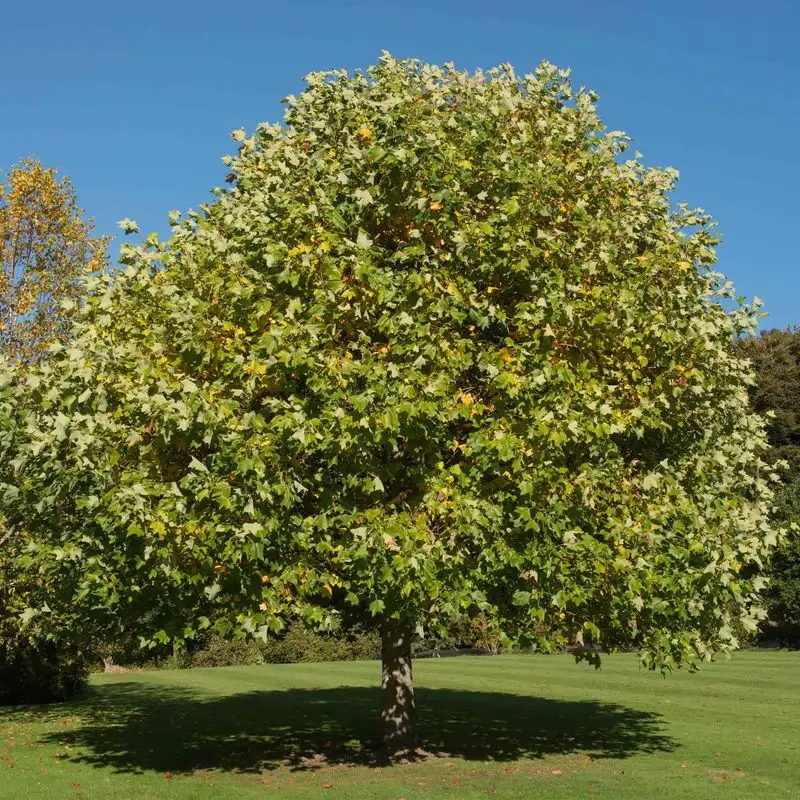
The Tulip Tree, or Yellow Poplar, is renowned for its tall, straight trunk and tulip-shaped flowers. These large, green-yellow blossoms appear in late spring and attract various pollinators.
This tree grows rapidly and can reach impressive heights, making it ideal for spacious areas. Its broad leaves turn golden yellow in the fall, adding seasonal beauty.
Tulip Trees prefer well-drained, slightly acidic soil and full sun. Their majestic stature and unique flowers make them a standout choice for parks or large gardens, where their grandeur can be appreciated.
Silk Tree
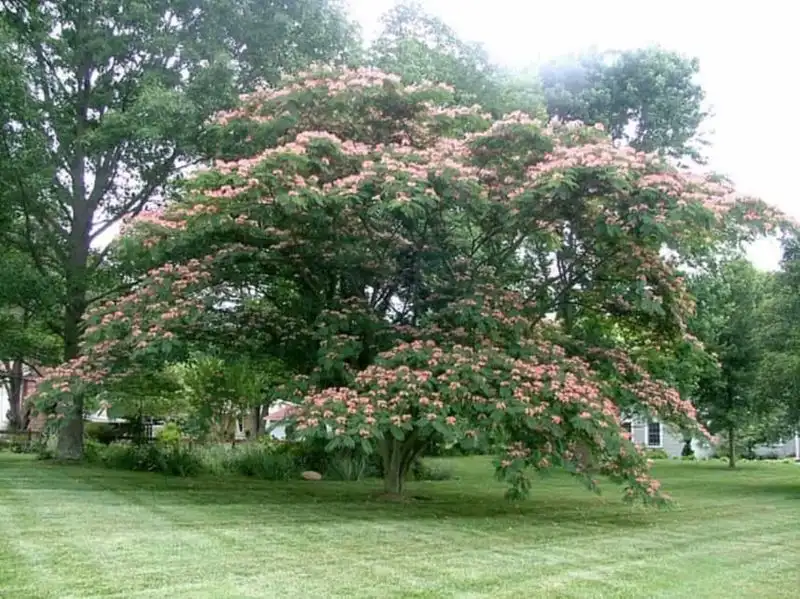
The Silk Tree, also known as Mimosa, enchants with its pink, fluffy blossoms that appear in summer. These flowers are highly attractive to butterflies and hummingbirds, adding life to gardens.
Its fern-like leaves provide a tropical touch, and the tree thrives in sunny, well-drained locations. Silk Trees are relatively low maintenance and can tolerate drought conditions once established.
While they grow quickly, their delicate beauty and wildlife-friendly nature make them a desirable choice for gardeners seeking to create a vibrant, tropical atmosphere.
Weeping Willow
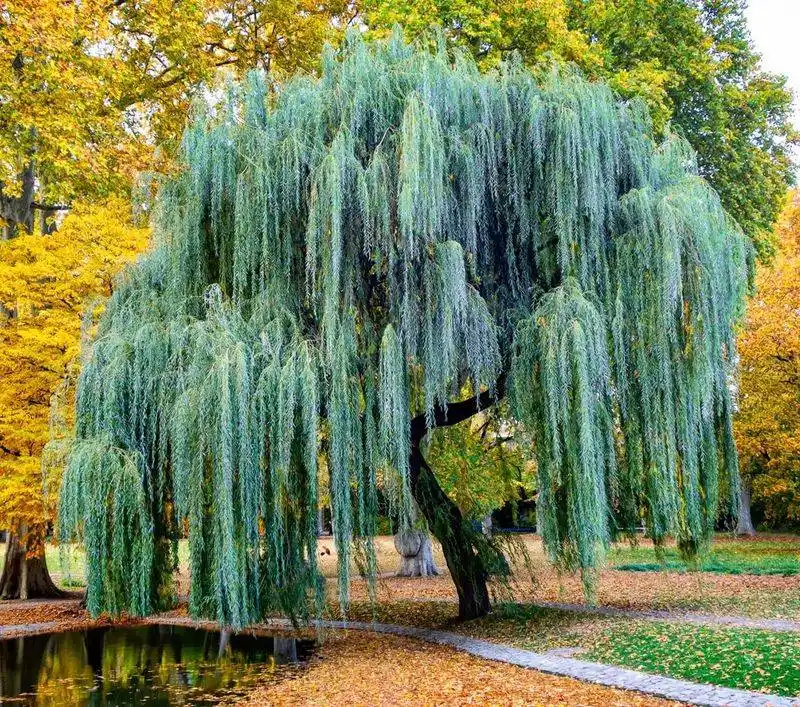
Weeping Willows are iconic for their graceful, cascading branches that create a serene atmosphere around water features. These trees thrive in moist soils, making them perfect for planting near ponds or streams.
Their narrow, light green leaves turn yellow in the fall, adding to their year-round appeal. Weeping Willows grow rapidly and require ample space to reach their full potential.
While they may require occasional pruning to maintain shape, their elegance and soothing presence make them a beloved choice for landscapes where their unique form can be appreciated.
Hawthorn
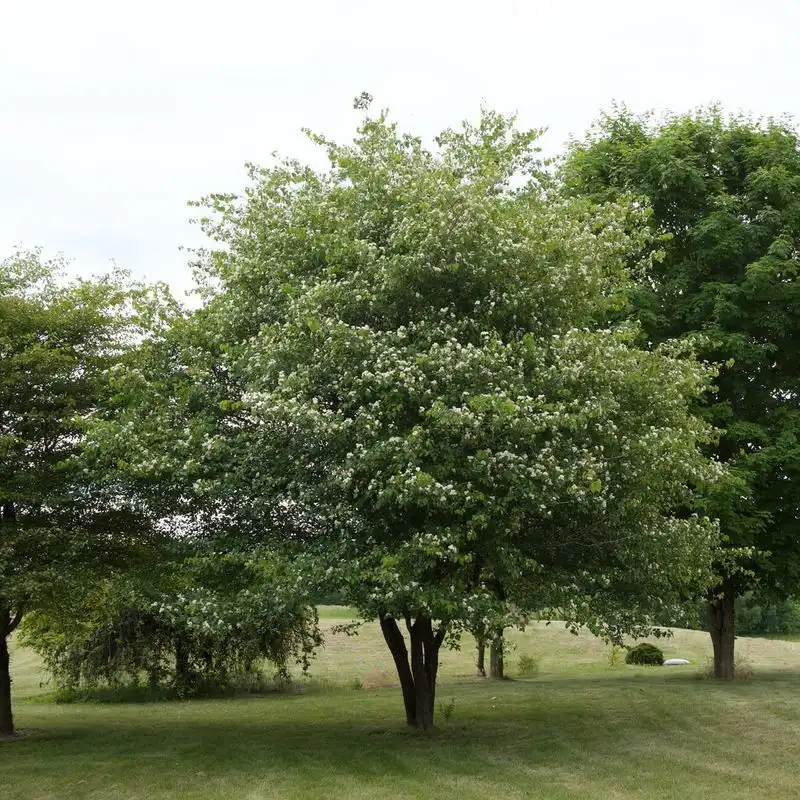
Hawthorn trees offer a charming addition to any garden, with their clusters of white flowers in spring. These are followed by bright red berries in the fall, which are a favorite among birds and wildlife.
Known for their thorny branches, Hawthorns can serve as effective natural barriers. They are adaptable to various soil types and thrive in both sun and partial shade.
Their compact size makes them suitable for smaller gardens, where they provide beauty and habitat for wildlife. Consider Hawthorn for its seasonal charm and ecological benefits.
River Birch
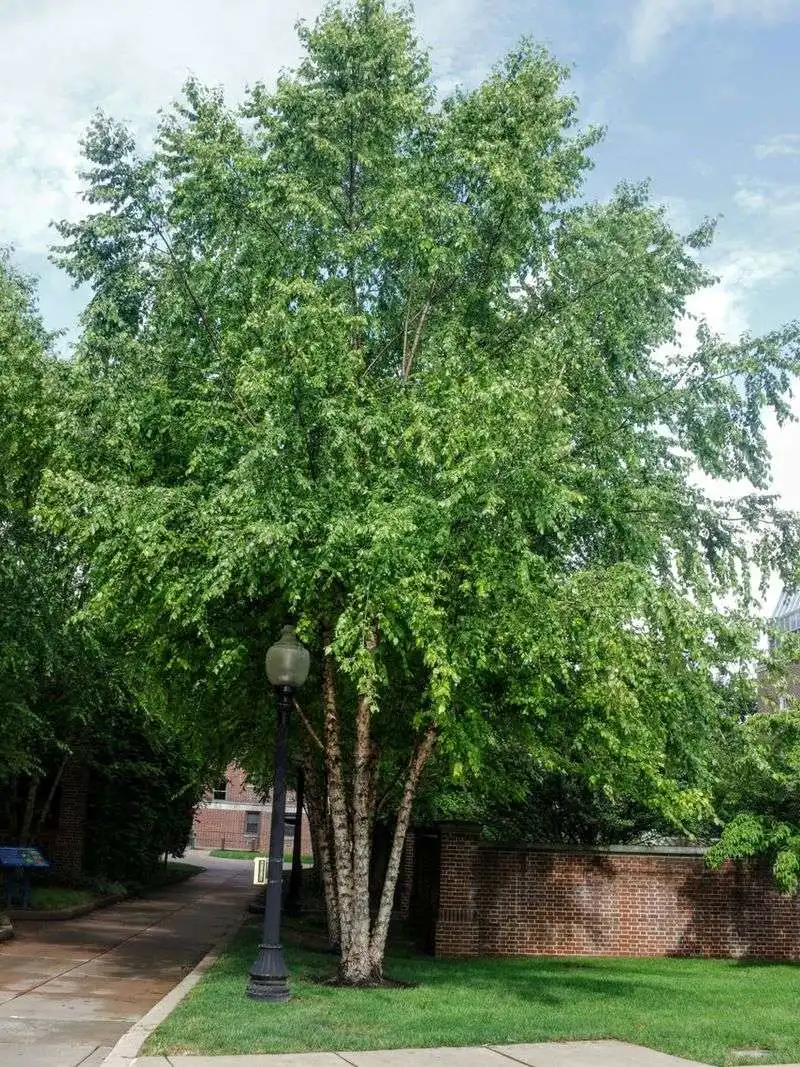
River Birch is celebrated for its attractive, peeling bark, which ranges in color from cinnamon to creamy white. This tree thrives in moist soils and is often found along riverbanks and wetlands.
Its bright green leaves turn a golden yellow in fall, adding seasonal appeal. River Birch is tolerant of wet conditions and can adapt to drier soils once established.
With its distinctive bark and graceful form, it adds visual interest throughout the year. Consider planting it in areas where its unique bark and adaptability to moisture can be appreciated.
Beech
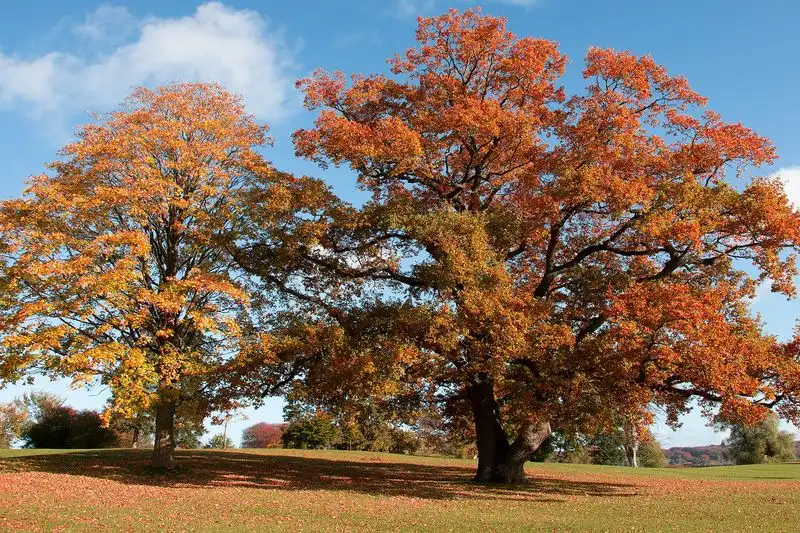
Beech trees are known for their smooth, gray bark and dense canopies. These stately trees offer excellent shade and are often used in larger landscapes or parks.
The leaves are a rich green during summer, turning coppery in the fall. Beech trees prefer well-drained soils and can thrive in both sun and partial shade.
While they can grow quite large, their majestic appearance and ability to support wildlife make them a valued addition to diverse landscapes. Consider Beech trees for their beauty, shade, and ecological contributions.

